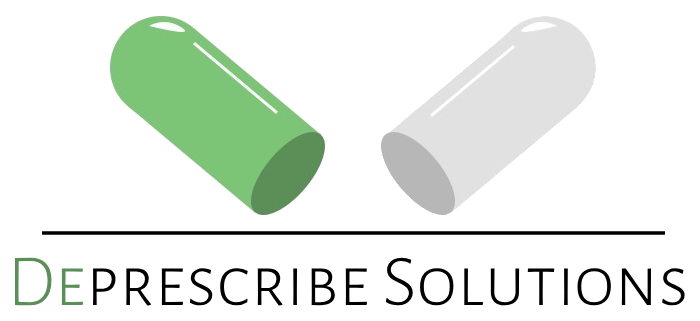A balanced equation for health.
In sports, athletes switch teams all the time. My beloved Toronto Raptors, lost their best player in franchise history, Kawhi Leonard, two months after he led the Raptors to their first NBA championship. Most pundits left the Raptors for dead, predicting the Raptors would throw away the upcoming season and drop in the Eastern Conference standings. Instead, the opposite happened. With most of the championship core intact, the Raptors went on to finish second in their conference.
This phenomenon is common in sports. Some call it “The Ewing Theory.” Others refer to it as “addition by subtraction.” The team maintains its level of play, sometimes even improving, not by seeking outside talent and additional players, but by losing its best player through a trade or free agency. For the Raptors, the loss of Kawhi Leonard allowed other members of the team to grow and fulfill larger roles. Although their title defence ended in the second round of the playoffs, the group outperformed all major expectations. It was a successful season.
In an effort to combine my passion for ball and my obsession with improving healthcare, I’d like to use the “addition by subtraction” analogy and flip it, showcasing a new way to think about healthcare and how we can potentially prevent many of the chronic maladies that plague our communities. I call it, “subtraction by addition.” I hope to give a new lens on how we look at chronic disease prevention, treatment and deprescribing.

A Formula For Disaster
Our healthcare system is struggling to keep up with demand. Some basic facts about primary care in Ontario.
- According to the Ontario Medical Association (OMA), more than 2 million people in Ontario don’t have a family doctor.
- 4/10 family doctors surveyed stated they are looking to retire within 5 years.
The number of people without access to primary care is only going to get worse, especially when factoring in population growth through immigration and a dwindling number of family doctors per capita. With our crumbling healthcare infrastructure, people turn to walk-in clinics and emergency rooms to seek basic medical care.
Walk-in clinics and ERs are optimal for fixing acute medical issues. A sinus infection, a broken bone or injury. No problem. Patients come into the system, get patched up and prescribed the right treatments and off they go. Where this system falls short is chronic disease management and mental health.
If you’re battling mental health and decide to visit the doctor, it’s a sign you’re at a low point. This creates a unique set of expectations. When someone is experiencing a mental breakdown, the hope and expectation is that the doctor will be able to prescribe treatment that will instantly fix their ailment. This puts prescribers in difficult conundrums. When a patient pours out their heart and soul, the physician may feel obligated to reach for the prescription pad.
It’s not enough to leave the doctor’s office with a reassuring pat on the back. Even worse when it’s a script for high-intensity interval training or a 10-minute mettā meditation. After all, these interventions put the onus on the patient, and require time, energy, discipline and accountability. It’s much easier to take a pill.
The same goes for other chronic diseases like hypertension and metabolic syndrome. When the doctor says you have high blood pressure, they’ll obviously tell you to “exercise” or “eat less salt,” however the conversation always ends with medicine. Take this pill, and your blood pressure will be controlled.
If we continue down this road, the future of healthcare looks concerning. With growing demand from an aging, sicker populace that is over-medicated, coupled with a shrinking supply of healthcare workers and resources. The end result? Likely an implosion of our healthcare system. Maybe bankruptcy from soaring healthcare costs. One thing is certain, people will suffer. Suffering that may have been avoided.
A Prescription For Prevention
Sorry for the doom and gloom. On a positive note, I think we are entering an interesting inflection point in healthcare. Medicine 3.0 is the future and prevention is the name of the game. More and more clinicians, as well as patients are waking up and actively fighting the uphill battle we face against chronic disease.
Taking medicines is not inherently bad. Prescription medicines, used in the right context, are an essential part of our health and longevity toolkit. However, the problem is when we rely solely on their use, which breeds complacency and static care. The alternative is a dynamic approach in which we empower patients to actively participate in their healthcare. The latter requires work, accountability, time, energy and commitment. Although the upfront costs seem high, investing in your long-term health by laying a strong foundation backed by good habits is an investment that will always pay dividends.
Some of the most powerful tools and strategies to improve our health include:
- Exercise – strength training, cardiovascular fitness, mobility.
- Balanced nutrition – dietary restriction, time-restricted eating, caloric restriction.
- Sleep hygiene – proper rest and recovery.
- Fostering healthy relationships – compassion and empathy.
- Mindfulness – meditation, journaling for self-reflection
How we incorporate these strategies into our daily routines is the fun part of deprescribing. In order for subtraction by addition to work effectively, we need to emphasize the above non-pharmacological interventions early in our patient’s care-plan. By adding elements like exercise, nutrition, journaling, and mental training into patients’ lives, we can effectively subtract the need for certain medications, leading to improved overall well-being and a more holistic approach to health.

A Playbook For Deprescribing
Integrating non-pharmacological interventions into our daily routines offers a multitude of benefits beyond reducing medication reliance. Engaging in regular exercise not only improves cardiovascular health but also boosts mood-elevating endorphins, acting as a powerful, natural antidepressant. Incorporating mindfulness practices through journaling and meditation can also provide an effective strategy to alleviate stress and anxiety.
By embracing these positive changes, we’re not just subtracting medications – we’re adding years to our lives and enhancing their quality. Subtraction by addition, in the form of deprescribing, offers us a profound shift in how we view health management. It encourages us to explore the remarkable potential of our bodies and minds to heal and thrive without solely relying on medications. As we continue to delve into the possibilities of deprescribing, we pave the way for a holistic approach to health that empowers us to live our lives to the fullest.
Deprescribing places the individual at the center of their health journey, empowering them to actively participate in their well-being. This approach encourages self-awareness and a deeper understanding of one’s body and its needs. Rather than passively relying on prescriptions, individuals can work with healthcare professionals to design personalized strategies that encompass exercise routines, dietary choices, and mindfulness practices. This collaborative effort allows individuals to gradually subtract medications as they witness the positive impact of these additions.
A Balanced Equation For Health
In a world where healthcare is often synonymous with prescription medicines, deprescribing emerges as a groundbreaking principle that celebrates the synergy between our bodies, minds, and the world around us.
This equation for well-being not only offers a means to reduce medication use but also invites us to embrace a more holistic way of living that prioritizes proactive, self-empowered health strategies. As we continue to explore the potential of subtraction by addition, we unlock new dimensions of vitality and resilience, reshaping the narrative of health and inviting a more balanced, fulfilling life.
Thanks for reading. Much love.
P.S. If you or anyone you know is interested in coming off their meds or learning more about deprescribing, click on “Work with Shawn” at the top of the site, or you can fill out the form below to contact me directly.
May you be happy and healthy.
SG

